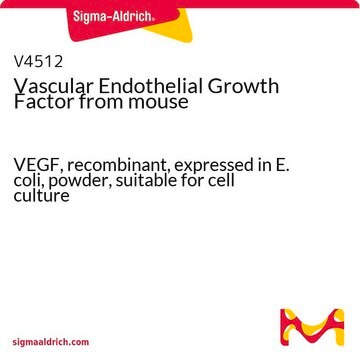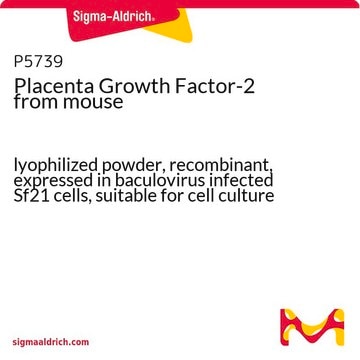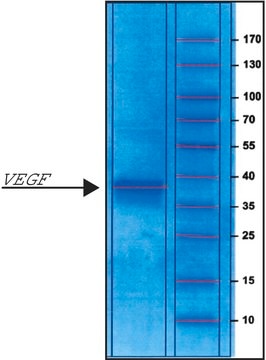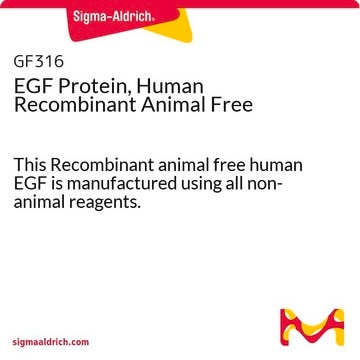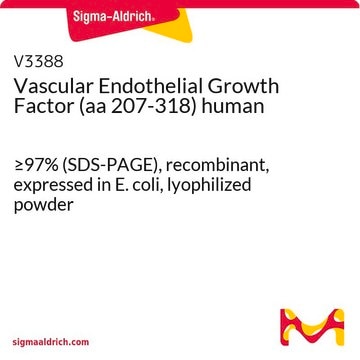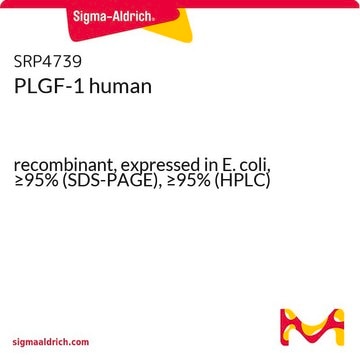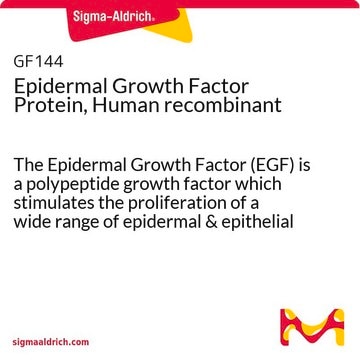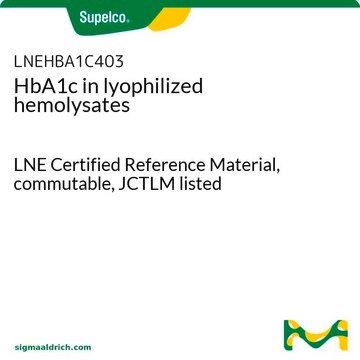P1588
Placenta Growth Factor human
PlGF, recombinant, expressed in E. coli, powder, suitable for cell culture
Synonym(s):
PGF, PlGF
About This Item
Recommended Products
biological source
human
Quality Level
recombinant
expressed in E. coli
assay
≥95% (SDS-PAGE)
form
powder
quality
endotoxin tested
mol wt
29 kDa
packaging
pkg of 10 and 50 μg
storage condition
avoid repeated freeze/thaw cycles
technique(s)
cell culture | mammalian: suitable
impurities
<1.0 EU/μg
shipped in
dry ice
storage temp.
−70°C
Related Categories
Biochem/physiol Actions
Physical form
Preparation Note
Reconstitution
Analysis Note
wgk_germany
WGK 3
flash_point_f
Not applicable
flash_point_c
Not applicable
ppe
Eyeshields, Gloves, type N95 (US)
Certificates of Analysis (COA)
Search for Certificates of Analysis (COA) by entering the products Lot/Batch Number. Lot and Batch Numbers can be found on a product’s label following the words ‘Lot’ or ‘Batch’.
Already Own This Product?
Find documentation for the products that you have recently purchased in the Document Library.
Articles
Vascular endothelial growth factor (VEGF) is a family of closely related growth factors having a conserved pattern of eight cysteine residues and sharing common VEGF receptors. VEGF-A (VEGF) is a potent growth factor for blood vessel endothelial cells, showing pleiotropic responses that facilitate cell migration, proliferation, tube formation, and survival. In the developing embryo VEGF-A mRNA is expressed by cells within tissues undergoing capillarization.
Read review on VEGF signaling pathway (Vascular endothelial growth factor (VEGF)/VEGF receptor) and find related products.
Our team of scientists has experience in all areas of research including Life Science, Material Science, Chemical Synthesis, Chromatography, Analytical and many others.
Contact Technical Service